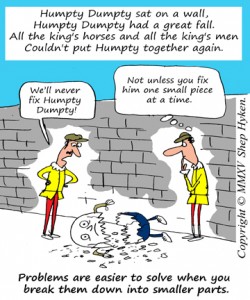 Customer Complaint
Customer Complaint
It’s not if we will ever get a customer complaint. It’s when we’ll get that complaint. And some are worse than others.
Recently I attended an amazing speech delivered by Dr. Jason Selk . It was based on his concept that he calls The Relentless Solution Focus or RSF. This is a concept he teaches professional athletes and high-performing business people. It’s about having the right mindset to mentally turn a problem around.
As he shared his ideas, I couldn’t help but think how powerful this concept would work in very tough customer service situations. Here is the background and commentary on Dr. Selk’s concept:
First, there is something Dr. Selk calls the Expectancy Theory, which is that what you focus on expands. He used the example of when a baseball player strikes out. If all the athlete thinks about is the strike-out as he or she walks onto the field, that negative thought can start to expand and consume the mind. That negative thought could jeopardize the next play. It applies in business as well. If a customer is upset or angry, you can’t let the negative energy affect you. Don’t take it personally. Don’t let their anger cause you to lose control.
Next is to recognize that you need to engage in RSF. This happens anytime you experience a negative emotion. You ask yourself the RSF question which is, “What is the one thing I can do – or do differently – that can make this situation better?” This one thing may solve the issue, or just get you an inch further. The key is that any positive movement toward resolving the problem or complaint, however small, is what you’re after.
Can you see how this applies to almost any customer service situations? Sometimes customers will be upset to the point that you feel there is nothing you can do to make them happy. From experience, there is always something you can do. The key is to start with something small. The RSF “One Thing” question is perfect. There has to be something that you can do. The worst case, it may be asking for a little time to sort things out. This gives the parties involved the opportunity to cool off and calm down. At the same time it gives the person trying to solve the customer’s problem a little time to come up with a solution that might make the customer happy.
This is such a simple process, but don’t let its simplicity make you think it’s not powerful. Write down the RSF question and post it somewhere you can see it. The next time you’re in a tough situation, where you feel frustrated, upset or even angry, ask yourself that question. All you’re looking for is for anything positive, regardless of how small, to move you toward a solution.



